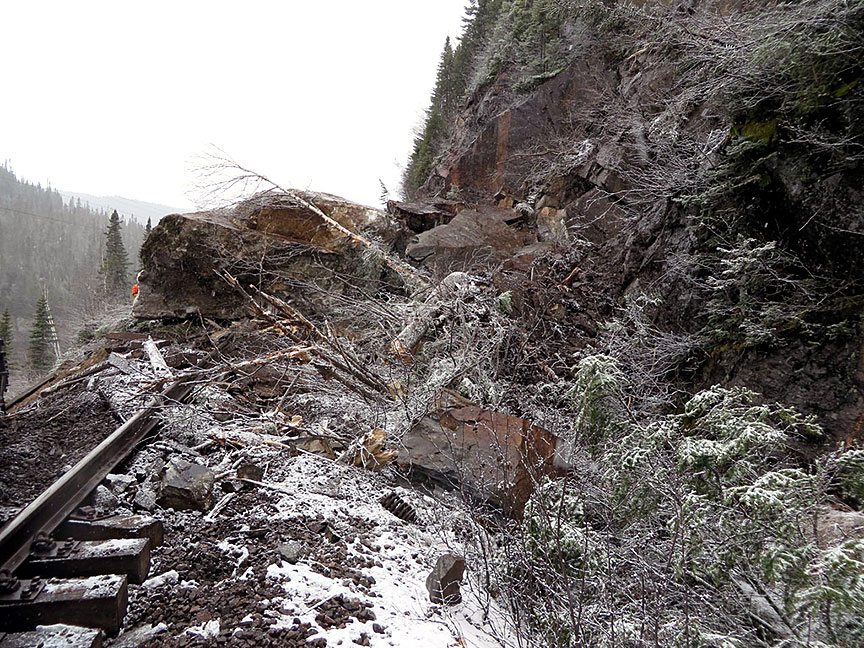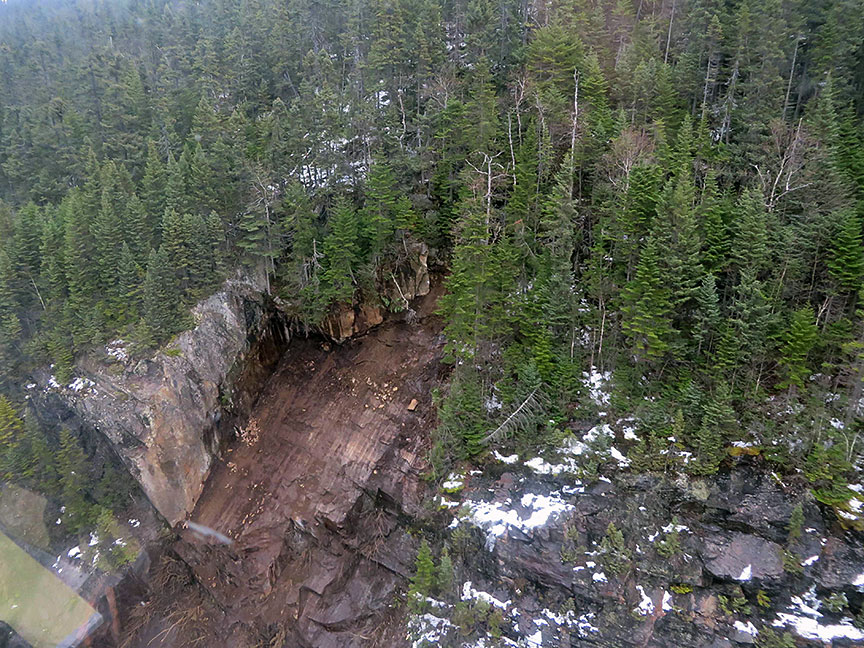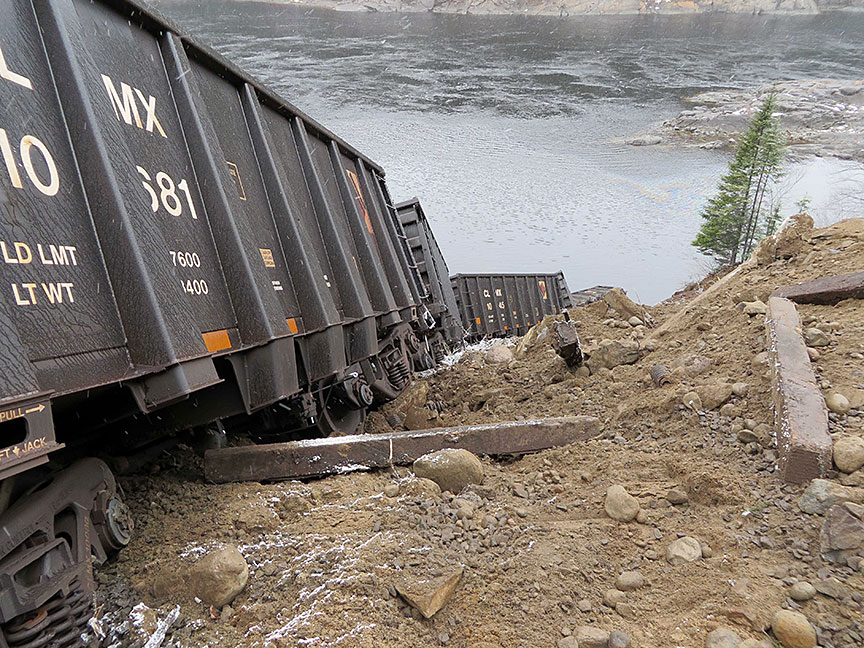Main-track Derailment
Quebec North Shore and Labrador Railway
Ore Train BNL-212J
Mile 14.65, Wacouna Subdivision
Near Tellier, Quebec
The occurrence
On , at approximately 0540, Eastern Standard Time, Quebec North Shore and Labrador Railway ore train BNL-212J was proceeding northward when it struck a rock and gravel slide. The collision caused the 2 lead locomotives and the first 9 cars to derail. The lead locomotive rolled down the slope and came to a stop at the bottom of the Moisie River, completely submerged. The locomotive engineer was fatally injured. About 1000 litres of diesel fuel spilled from the locomotive. About 100 feet of railway track was destroyed.
Media materials
News releases
Boulders blocking the track and limited visual cues led to November 2014 derailment near Tellier, Quebec
Read the news release
Deployment notice
TSB deploys a team of investigators to the site of a QNS&L train derailment near Sept-Îles, Quebec
The Transportation Safety Board of Canada (TSB) is deploying a team of investigators near Sept-Îles, Quebec, where a train operated by Quebec North Shore and Labrador (QNS&L) derailed. The TSB will gather information and assess the occurrence.
Investigation information
Download high-resolution photos from the TSB Flickr page.
Class of investigation
This is a class 3 investigation. These investigations analyze a small number of safety issues, and may result in recommendations. Class 3 investigations are generally completed within 450 days. For more information, see the Policy on Occurrence Classification.
TSB investigation process
There are 3 phases to a TSB investigation
- Field phase: a team of investigators examines the occurrence site and wreckage, interviews witnesses and collects pertinent information.
- Examination and analysis phase: the TSB reviews pertinent records, tests components of the wreckage in the lab, determines the sequence of events and identifies safety deficiencies. When safety deficiencies are suspected or confirmed, the TSB advises the appropriate authority without waiting until publication of the final report.
- Report phase: a confidential draft report is approved by the Board and sent to persons and corporations who are directly concerned by the report. They then have the opportunity to dispute or correct information they believe to be incorrect. The Board considers all representations before approving the final report, which is subsequently released to the public.
For more information, see our Investigation process page.
The TSB is an independent agency that investigates air, marine, pipeline, and rail transportation occurrences. Its sole aim is the advancement of transportation safety. It is not the function of the Board to assign fault or determine civil or criminal liability.



